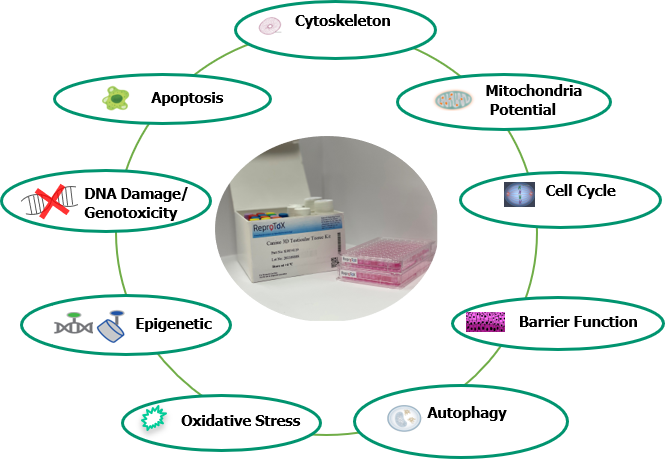
| Assay No | Name/Species | Endpoint | Cell Type | Price |
|---|---|---|---|---|
| CS-SCs | Canine Sertoli Cell | Viability/Cytotoxicity, Multiplexed High-Content analysis | Canine, Primary Sertoli Cell | Quote |
| MU-SCs | Mouse Sertoli Cell | Viability/Cytotoxicity, Multiplexed High-Content analysis | Mouse, Sertoli Cell Line | Quote |
| MU-LCs | Mouse Leydig Cell | Viability/Cytotoxicity, Multiplexed High-Content analysis | Mouse, Leydig Cell Line | Quote |
| MU-SPs | Mouse Spermotogonial Cell | Viability/Cytotoxicity, Multiplexed High-Content analysis | Mouse, Spermotogonial Cell | Quote |
| HU-SCs | Human Sertoli Cell | Viability/Cytotoxicity, Multiplexed High-Content analysis | Human Primary Sertoli Cells | Quote |
| HU-LCs | Human Leydig Cell | Viability/Cytotoxicity, Multiplexed High-Content analysis | Human primary Leydig Cells | Quote |
| 3D-T®Repro_Primary Canine | Canine Organoid | Viability/Cytotoxicity, Multiplexed High-Content analysis | Canine Primary Sertoli Cell | Quote |
| 3D-T®Repro_Primary Mouse | Mouse reproductive 3D model | Viability/Cytotoxicity, Multiplexed High-Content analysis | Mouse primary testicular cells | Quote |
| 3D-T®Repro_Primary Rat | Rat reproductive primary cell 3D model | Multiplexed High-Content analysis | Rat primary testicular cells | Quote |